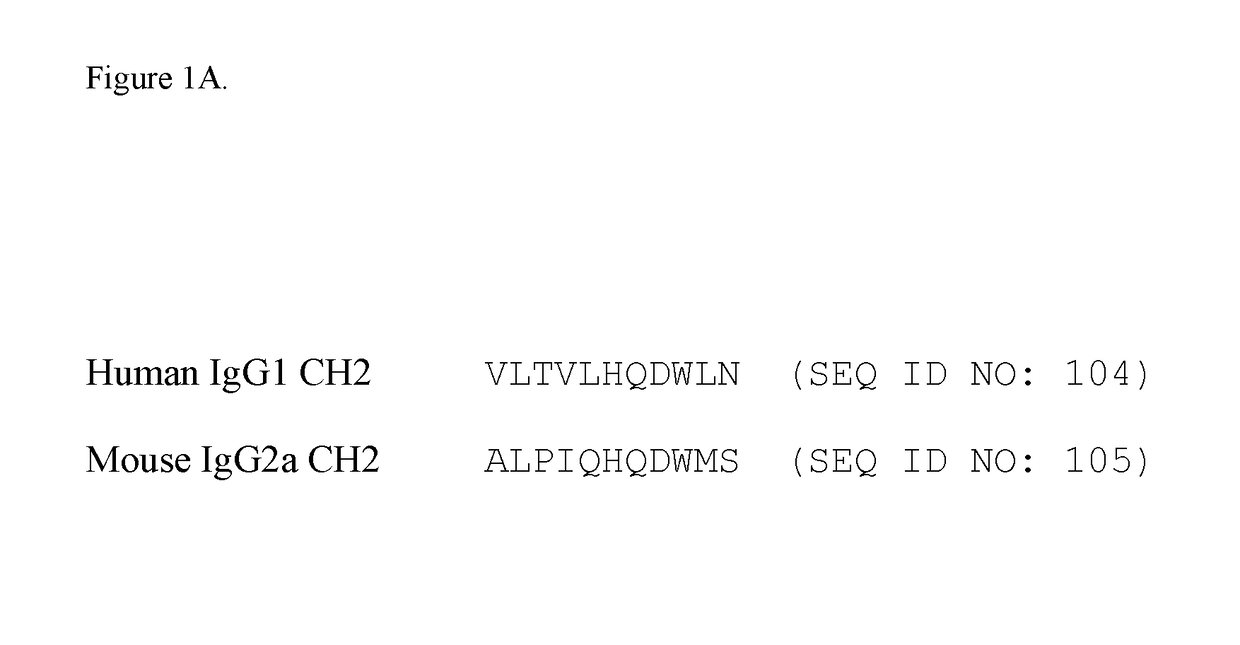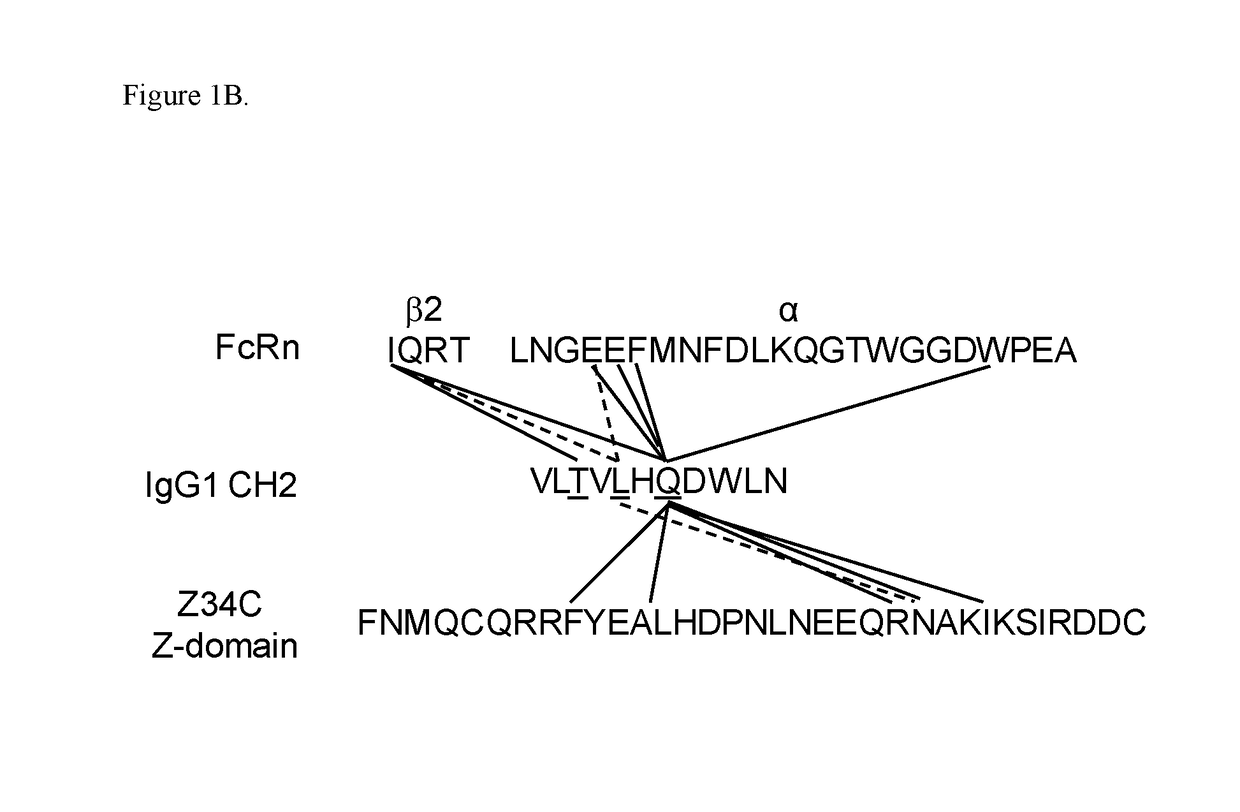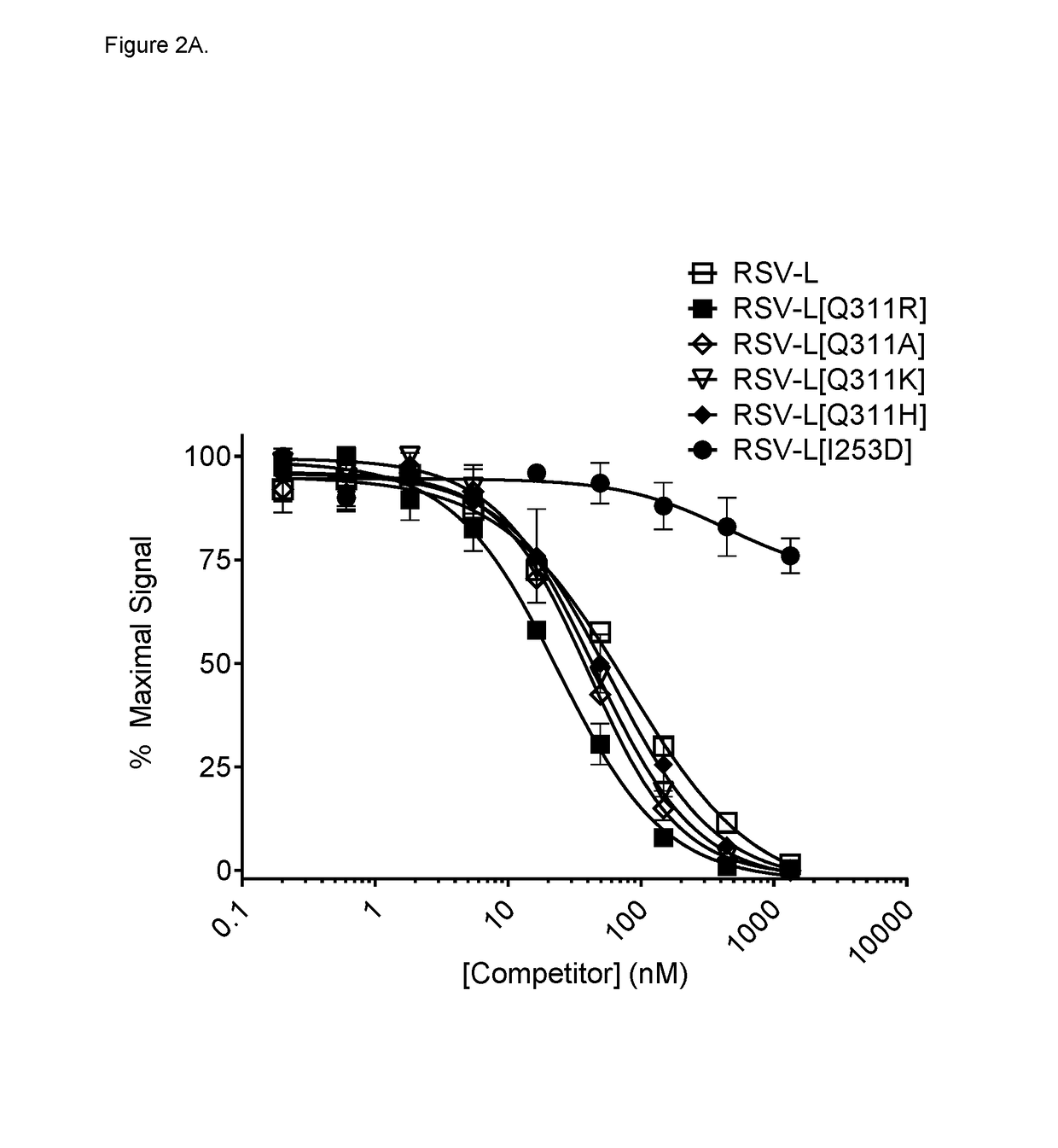Engineered Multispecific Antibodies and Other Multimeric Proteins with Asymmetrical CH2-CH3 Region Mutations
a technology of asymmetric ch2-ch3 region and multimeric protein, which is applied in the field of engineering multispecific antibodies and other multimeric proteins with asymmetric ch2-ch3 region mutations, can solve the problems of difficult purification of bispecific antibodies, limited development of bispecific antibodies, and short serum lifetime of fv-only or alternative scaffold molecules
- Summary
- Abstract
- Description
- Claims
- Application Information
AI Technical Summary
Benefits of technology
Problems solved by technology
Method used
Image
Examples
example 1
Fc Mutations that Potentially Reduce Fc Binding to Protein A
[0489]FcRn and Z-domain of protein A bind to Fc at the interface between the CH2 and CH3 domains, contacting many of the same residues on the Fc. Since mouse IgG2a / b bind to Z-domain weaker than human IgG1 while all bind to FcRn, positions were identified in the Z-domain binding interface of human IgG1 CH2 domain which were not conserved in mouse IgG2a CH2 domain. FIG. 1A shows the alignment of human IgG1 and mouse IgG2a CH2 domains between residues 305 and 315. Since the residues at positions 305, 307, 309, 314 and 315 differed between human and mouse sequences, it was hypothesized that introducing the reverse mutations T307P and / or L309Q into human IgG1 may result in engineered IgG1 variants with decreased binding to protein A without affecting FcRn interaction. Valine 305 in human IgG1 is situated in a β-strand in the CH2 domain and does not interact with protein A or FcRn. While Leucine 314 and Asparagine 315 differ bet...
example 2
n of Monospecific and Bispecific Antibodies Used in the Studies
[0491]Mutations T307A, Q311A, Q311K, Q311E, T307P / L309Q or T307P / L309Q / Q311R were engineered into both heavy chains of various monospecific antibodies using standard molecular biology techniques.
[0492]Bispecific mAbs were generated using common light chain technology or by promoting Fab arm exchange using Duobody® technology or Knob-in-Hole technology. In the common light chain technology, anti-TNFα and anti-αVβ5 antibodies which were known to share the light chain were used. In the knob-in-hole technology, either knob (T366W mutation) or hole (T366S, L368A, Y407V mutations) was introduced into the parental monospecific antibodies. In the Duobody® technology, F405L or K409R mutations were introduced into the parental monospecific antibodies.
[0493]The generated bispecific antibodies harbored the mutation(s) that potentially disrupt or reduce protein A binding (T307A, Q311A, Q311K, Q311E, T307P / L309Q and T307P / L309Q / Q311R)...
example 3
T307, L309 and / or Q311 Mutations to Binding to Z Domain and FcRn Binding of Monospecific IgG1 Variants to Z Domain
[0498]Monospecific anti-RSV antibodies harboring Fc mutations as shown in Table 8 were used in the study.
[0499]RSV-L eluted from protein A resin at pH 4.09. Whereas T307A mutation had no effect on protein A binding (data not shown), T307P / L309Q mutation (mAb RSV-L[TL]) resulted in a modest decrease in binding to protein A, causing this mAb to elute at pH 4.48. Additional weakening effect on protein A binding could be achieved by symmetrical Q311K or Q311R mutations, but not by Q311A mutation. Introducing a triple mutation T307P / L309Q / Q311R (mAb RSV-L[TLQ]) further disrupted interaction with protein A, as evidenced by elevated elution pH of 4.70. Table 10 shows the elution pH values of the generated IgG1 variants.
[0500]These results demonstrated that Q311K, Q311R, T307P / L309Q and T307P / L309Q / Q311R symmetrical mutations each decreased binding of the variant IgG1 to protein...
PUM
 Login to View More
Login to View More Abstract
Description
Claims
Application Information
 Login to View More
Login to View More - R&D
- Intellectual Property
- Life Sciences
- Materials
- Tech Scout
- Unparalleled Data Quality
- Higher Quality Content
- 60% Fewer Hallucinations
Browse by: Latest US Patents, China's latest patents, Technical Efficacy Thesaurus, Application Domain, Technology Topic, Popular Technical Reports.
© 2025 PatSnap. All rights reserved.Legal|Privacy policy|Modern Slavery Act Transparency Statement|Sitemap|About US| Contact US: help@patsnap.com



